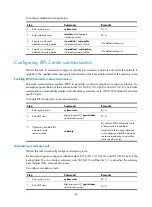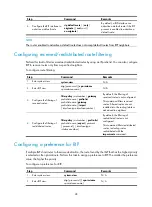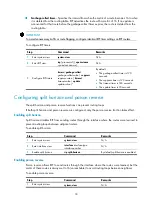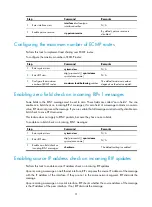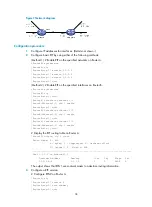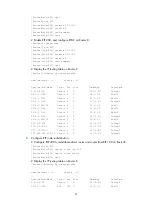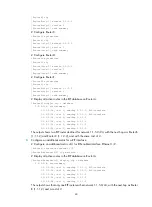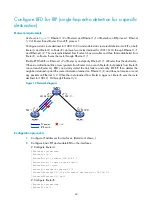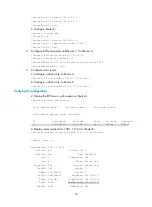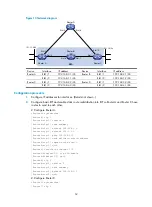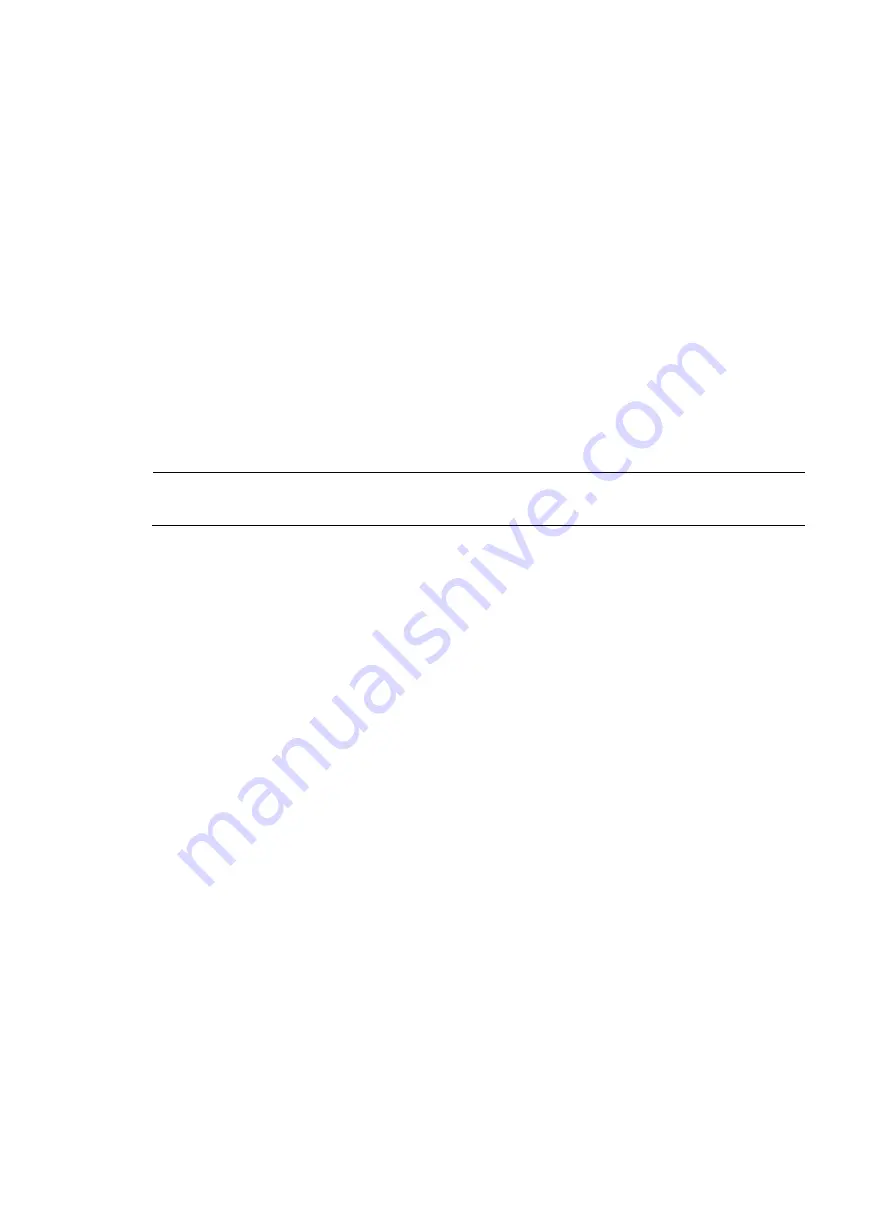
39
# Configure RIPv2 on Router B.
[RouterB] rip
[RouterB-rip-1] version 2
[RouterB-rip-1] undo summary
[RouterB-rip-1] quit
# Display the RIP routing table on Router A.
[RouterA] display rip 1 route
Route Flags: R - RIP
A - Aging, S - Suppressed, G - Garbage-collect
O - Optimal, F - Flush to RIB
----------------------------------------------------------------------------
Peer 1.1.1.2 on Ethernet1/1
Destination/Mask Nexthop Cost Tag Flags Sec
10.0.0.0/8 1.1.1.2 1 0 RAOF 87
10.1.1.0/24 1.1.1.2 1 0 RAOF 19
10.2.1.0/24 1.1.1.2 1 0 RAOF 19
The output shows that RIPv2 uses classless subnet masks.
NOTE:
After RIPv2 is configured, RIPv1 routes might still exist in the routing table until they are aged out.
# Display the RIP routing table on Router B.
[RouterB] display rip 1 route
Route Flags: R - RIP
A - Aging, S - Suppressed, G - Garbage-collect
O - Optimal, F - Flush to RIB
----------------------------------------------------------------------------
Peer 1.1.1.1 on Ethernet1/1
Destination/Mask Nexthop Cost Tag Flags Sec
2.1.1.0/24 1.1.1.1 1 0 RAOF 19
3.1.1.0/24 1.1.1.1 1 0 RAOF 19
4.
Configure RIP route filtering:
# Use IP prefix lists on Router B to filter received and redistributed routes.
[RouterB] ip prefix-list aaa index 10 permit 2.1.1.0 24
[RouterB] ip prefix-list bbb index 10 permit 10.1.1.0 24
[RouterB] rip 1
[RouterB-rip-1] filter-policy prefix-list aaa import
[RouterB-rip-1] filter-policy prefix-list bbb export
[RouterB-rip-1] quit
# Display the RIP routing table on Router A.
[RouterA] display rip 1 route
Route Flags: R - RIP
A - Aging, S - Suppressed, G - Garbage-collect
O - Optimal, F - Flush to RIB
----------------------------------------------------------------------------
Peer 1.1.1.1 on Ethernet1/1
Destination/Mask Nexthop Cost Tag Flags Sec


